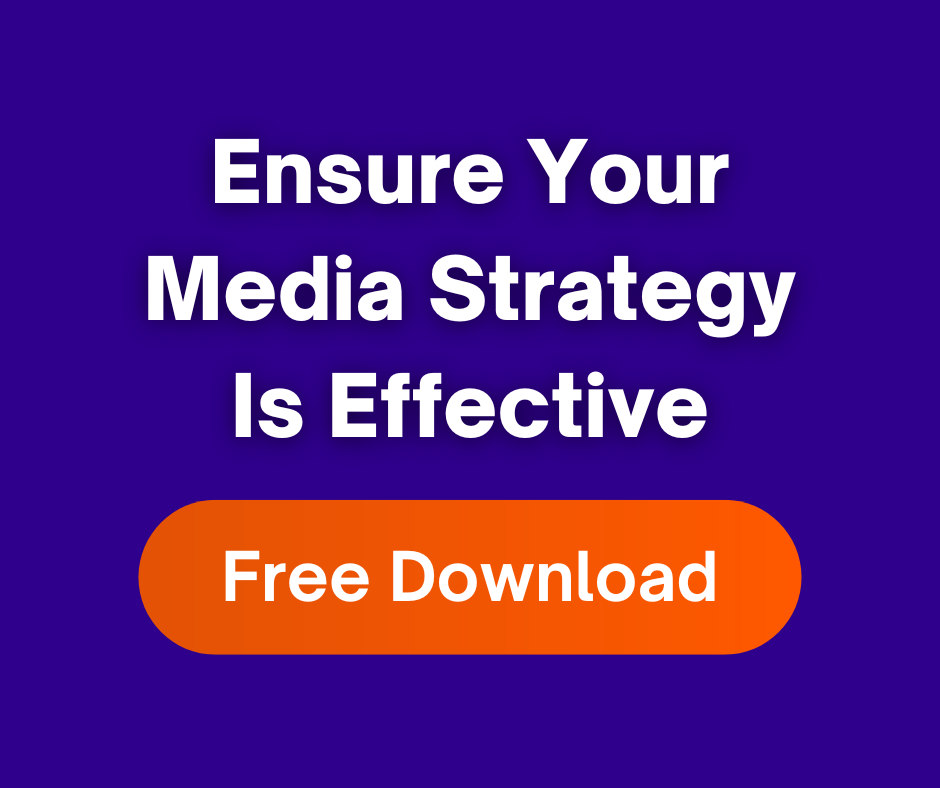Media In The Moment: Episode 1
How Connected TV Fits Into The Media Mix
There’s been a lot of talk about Connected TV (CTV), especially over the past year. Leichtman Research Group’s Connected TVs 2021 study found that 82% of U.S TV households now have at least one connected TV device. Lockdowns associated with the COVID-19 pandemic accelerated CTV’s adoption and high levels of usage still persist today. 3 out of 4 consumers prefer to watch video on a TV set, compared to a laptop/desktop computer (11%) a smartphone (8%) or a tablet (3%). About 43% of all TV sets in U.S. Households are connected Smart TVs, up from 32% in 2019. As viewers increasingly access video content in this way, it’s important for advertisers to understand what CTV is, how it works, and how it fits into a media strategy. We discussed the topic a while back in this blog post but thought it was time for an update.
Our Founder and President, Charles Fetterly, spoke with Kimberly Warren, Senior Account Executive at Gamut, and Nate Marshall, Media Strategist at TEC Direct Media, to answer some of our clients’ frequently asked questions and share more insights on what marketers need to know about CTV. We’ve listed some of the key takeaways below and invite you to listen to the full conversation in the first episode of our new audio series, “Media in the Moment.”
Key Takeaways:
OTT vs. CTV – What’s the Difference?
OTT stands for Over-The-Top. It refers to content that’s delivered via an internet connection. A traditional cable/broadcast provider is not necessary. OTT is not device specific – it can be seen on mobile devices, desktops, tablets and Smart TVs.
The IAB defines CTV as, “a television set that is connected to the Internet via OTT devices, Blu-ray players and gaming consoles or has built-in Internet capabilities (i.e., a Smart Television) and is able to access a variety of long-form and short-form web-based content.”
Where does CTV advertising fit in a brand’s media mix?
We believe CTV works best as a complement to other media channels like linear TV. Adding a CTV element allows you to leverage high-quality video content and reach cord cutters you’re not able to reach through a stand-alone linear TV buy. Marketers who want to use video but don’t have the budget for traditional TV also like CTV.
When do you recommend CTV?
With linear TV, we may recommend buying four or five networks based on programs that have a big audience you can reach. With CTV, we can granularly target based on demographics, behaviors and specific types of content. You buy the audience wherever they’re watching it – not solely on a network by network basis as you would with linear TV.
How should marketers think differently about a CTV strategy?
The key part is the approach to targeting. It’s important to shift from buying programs, to targeting audiences. Set up advanced targeting to best reach fans, consumers and prospects.
What targeting is available with CTV?
With CTV, marketers can get more detailed with targeting and eliminate wasted impressions. There’s demographic, geo-targeting, behavioral and content targeting. Be aware, the more layers of targeting you add, the more limited scale may become.
What are some things to consider when it comes to CTV inventory?
It really comes down to your goals. Do you just need to reach the audience wherever they are, or are you looking to be in premium content? What are the brand-safe places that align with your audience? Is it important to run device specific? What level of reporting will you need? Inventory is available through the open exchange or directly with inventory sources. Many sources receive direct inventory from publishers with higher level premium access. These relationships allow for more transparent reporting and awareness of where impressions are running in real-time.
What does CTV measurement and reporting look like?
Currently, the two main CTV performance measurements are total impressions and video completion rates (VCR). The average VCR is typically 85-90%. Some reports also provide info on dayparts, devices, networks, creative, even specific geos or zip codes. It’s helpful for marketers to see performance and discover how they can approach their next campaign. Some attribution models are also being tested.
What challenges are there with adopting OTT or CTV?
As with any new medium, educating marketers on what CTV is, how it works and the benefits it offers brands will help overcome most of the concerns. We spend a great deal of time discussing the various targeting strategies (vs. Linear TV), inventory sources and setting realistic expectations.
What’s the future of Connected TV?
More people are switching to streaming content every day. Currently, 39% of adults in US TV households watch video on a TV via a connected device daily. Among all ages 18-34, 54% watch video on a TV via a connected device daily. It’ll be interesting to see if consumer adoption continues to be a Cord-Stacker approach. (Editor’s note, a ‘Cord-Stacker’ is someone who subscribes to both Pay-TV and one or more streaming services.) We predict inventory sources may consolidate, provide more contextual options and offer flexibility on the buy side.
Look for more of these types of conversations in the future as we find ways to help our clients understand the solutions different media can offer. If you want to learn more about Connected TV or any other media channels, contact us or follow us on our socials. We’re happy to chat via phone, zoom, or email!




